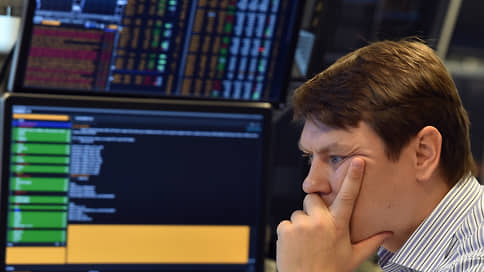Investors joined the yuan
[ad_1]

Trading on the Moscow Exchange survived another Black Tuesday. During the main session, the stock index fell by almost 9%, having rolled back to the values of a month ago. At the beginning of the day, the bearish game was provoked by plans to increase the debt burden of oil and gas companies, and in the second half, sales intensified on political news. At the same time, investors were actively buying Chinese currency. In the coming days, geopolitics will fully determine the behavior of investors in the Russian market, although experts expect the index to consolidate above the level of 2200 points.
On Tuesday, September 20, the Russian market experienced the strongest drop since the start of Russia’s special military operation (SVO) in Ukraine (see “Kommersant” dated February 25). Already in the first hour of trading, the Moscow Exchange index fell by more than 2%, dropping below the level of 2400 points. By 15:00, the index reached 2171.92 points, which is 10% lower than Monday’s closing values. Seven months ago, the index was down over 45%. As a result of the main trading session, the index stopped at 2215.67 points, having lost 8.84% during the day. The collapse of quotations was accompanied by an increase in trading volume, which reached 129 billion rubles, a record high since the end of February.
In the evening session, the index reached 2175.34 points, but by 21:00 returned to the mark above the level of 2200 points.
The market fell on a wide front, with the largest decline at the end of the day showing the securities of Polymetal, TCS, Yandex, VK and Ozon, in which private investors are traditionally active.
However, the main contribution to the fall of the index was made by the shares of companies in the oil and gas sector, which fell by 10-12%. Gazprom shares turned out to be outsiders, losing almost 11% in price following the main session, and during the day falling by 18%, to the values at which they were after the company refused to pay interim dividends (see “Kommersant” dated June 30).
There were plenty of reasons for massive short play. At the beginning of the day, the market dynamics was determined by news about the government’s plans to collect about 1.4 trillion rubles from commodity exporters. in 2023 (see “Kommersant” dated September 20).
“Increase in export duties on pipeline gas, oil, introduction of duties on LNG, increase in the severance tax — all this will help reduce the free cash flows of companies in the oil and gas sector,” said Dmitry Skryabin, portfolio manager at Alfa Capital.
The additional tax burden calls into question the prospects for paying dividends by companies, and primarily by Gazprom. “The market is extrapolating the situation at the beginning of the summer, when its shareholders refused to pay dividends,” notes a source in a large management company. Meanwhile, the dividend theme is traditionally one of the main drivers on the Russian stock market. “After the start of the CBO, many Russian companies faced not only financial, but also technical problems that make it difficult to pay dividends. The latest news, which is “bearish” in itself, could also put strong psychological pressure on investors,” notes Oleg Syrovatkin, Leading Analyst at Otkritie Investments Global Research Department.
The market was also negatively impacted by reports of planned referendums in the territories of the SVO and amendments to the Criminal Code of the Russian Federation related to mobilization and martial law. These new risks, according to Viktor Tunev, chief analyst of Ingosstrakh Investments, the market did not know how to evaluate them, so it preferred to sell.
“Brokers are very cautious and therefore quickly react to the deterioration of the market situation by tightening collateral requirements, as a result, we see stop losses and margin calls triggering,” notes the manager of a large portfolio.
The increased geopolitical risks were reflected in the foreign exchange market. In the first half of the day, the dollar exchange rate on the Moscow Exchange fell to 59.9 rubles/$, but in the second half it grew steadily and closed at 60.6 rubles/$. At the same time, market participants actively bought the Chinese currency, the trading volume of which exceeded 71.55 billion rubles, a record result in the entire history of trading. “The yuan can become a kind of safe haven where private investors are actively leaving,” notes a portfolio manager of Russian funds.
Further movement of the stock market will be determined primarily by the development of the geopolitical situation. “If new risks do not arise, and Gazprom’s dividends are approved (see “Kommersant” dated August 31), then you can see the recovery of the market on the expectation of an inflow of funds from dividend payments,” Mr. Tunev believes. In the coming weeks, the Moscow Exchange index, according to Oleg Syrovatkin, will trade in the range of 2200-2500 points, in which he spent the second half of spring and the first third of summer.
[ad_2]
Source link





